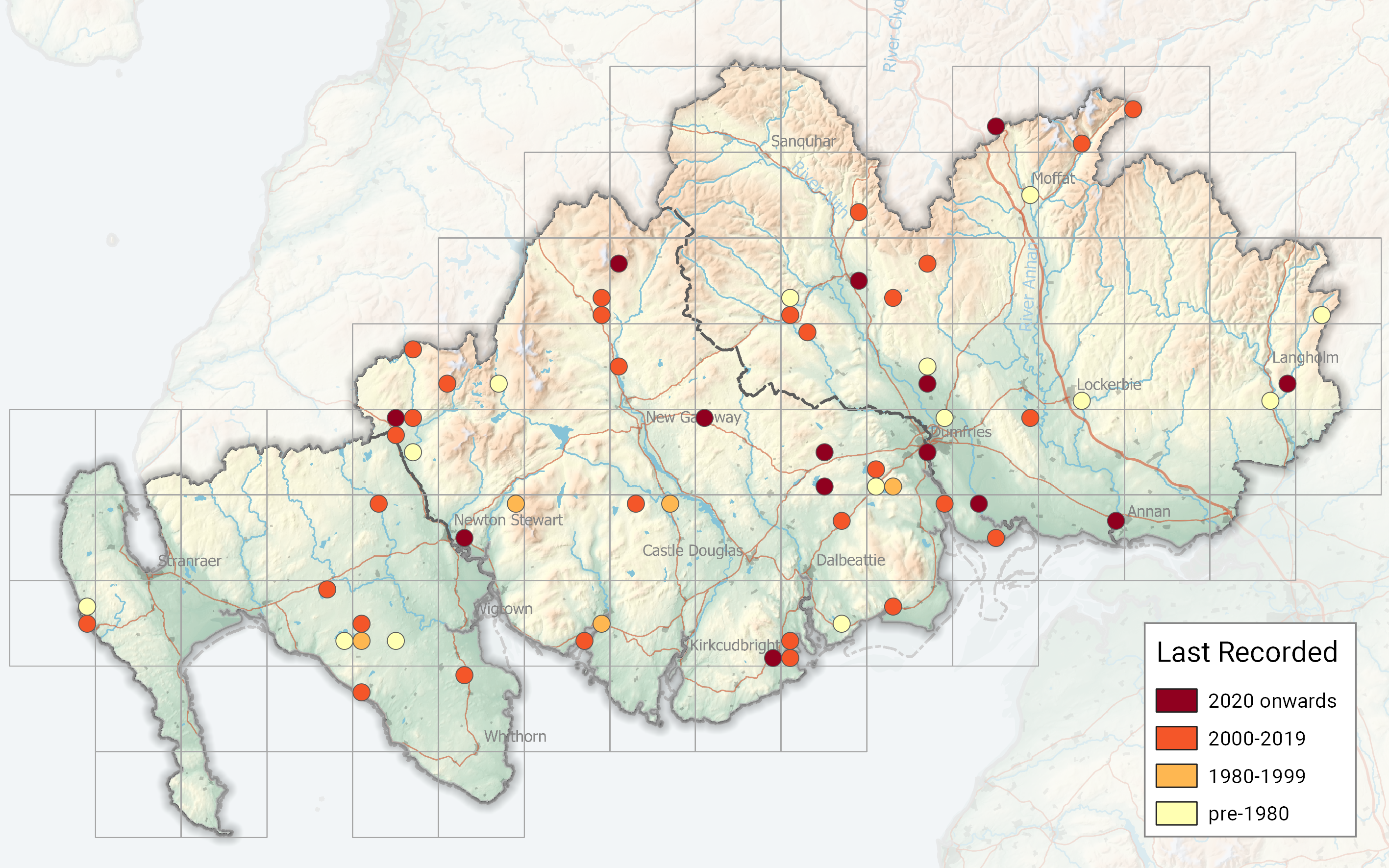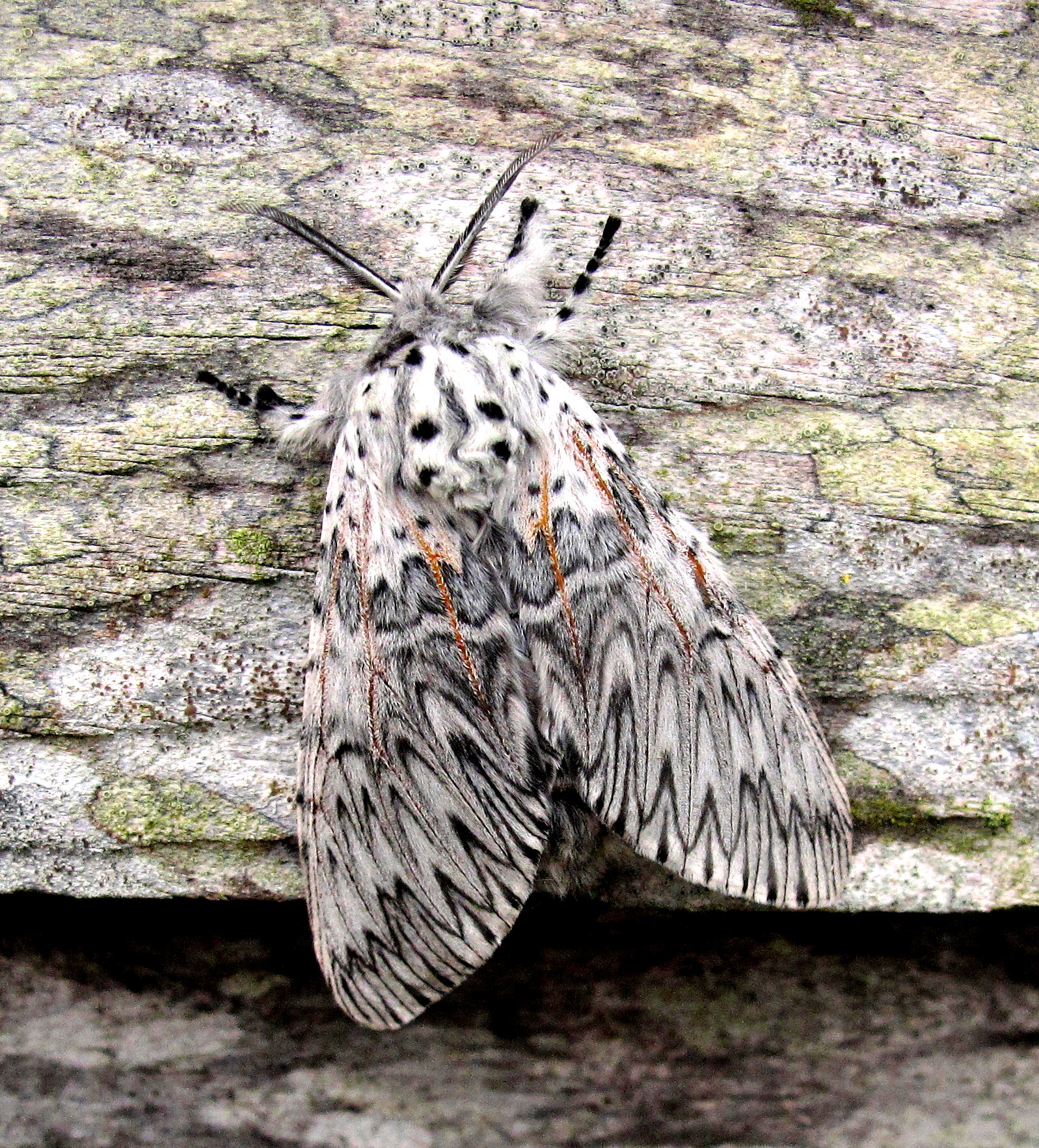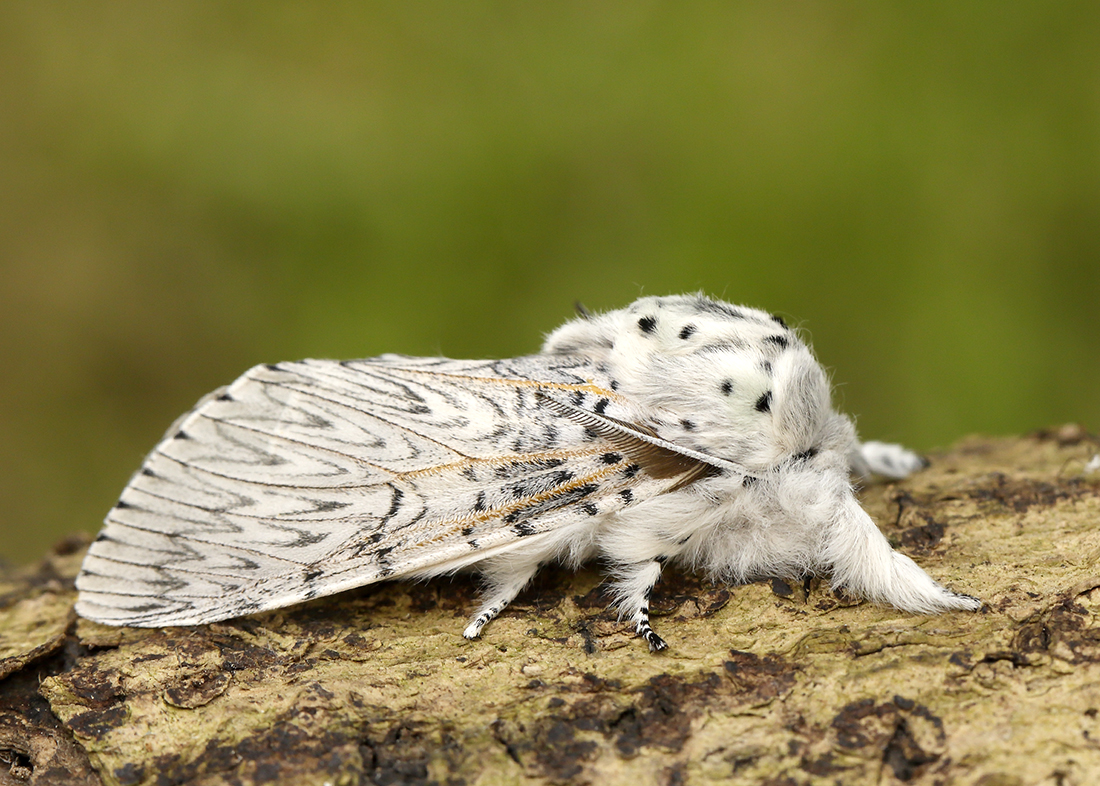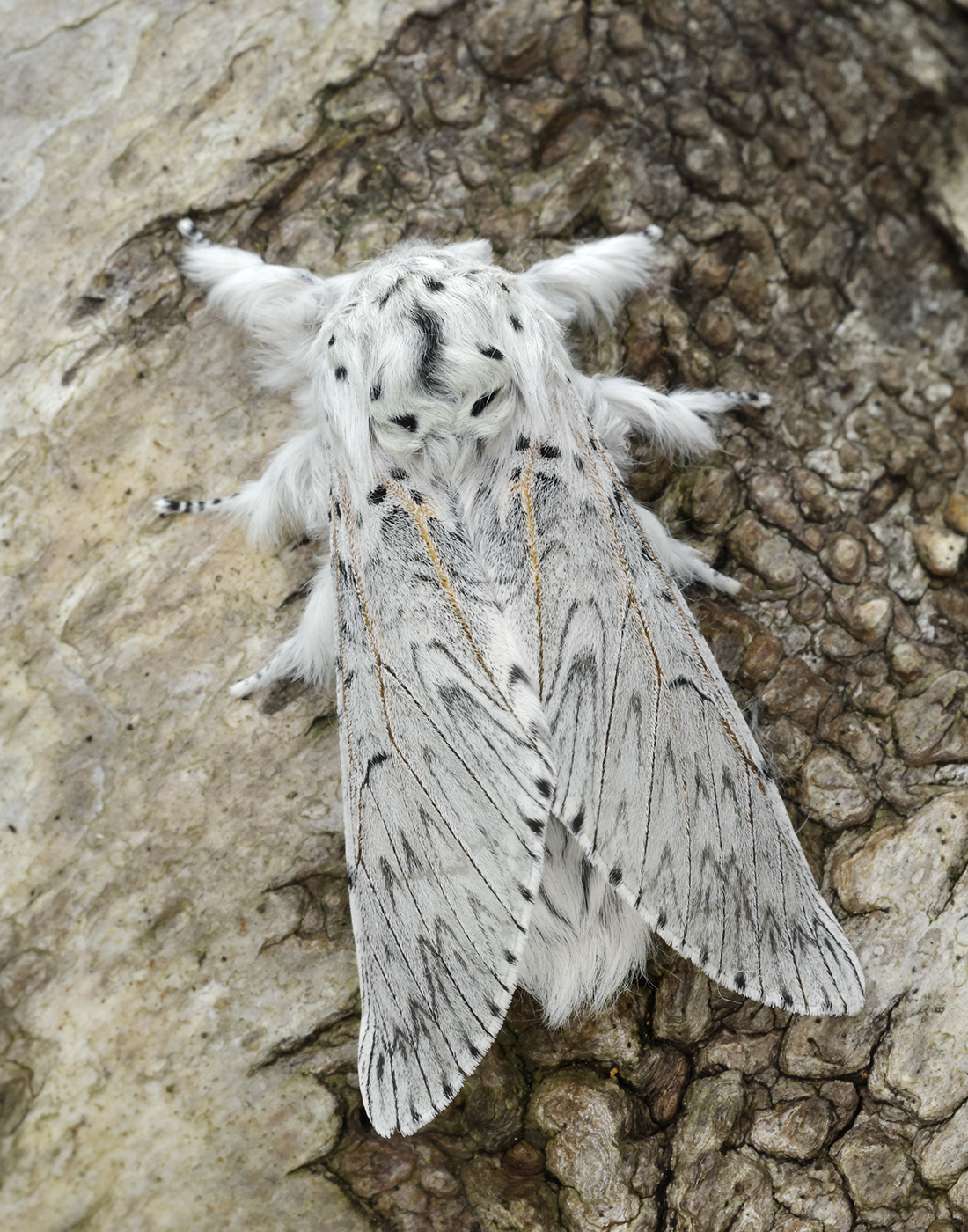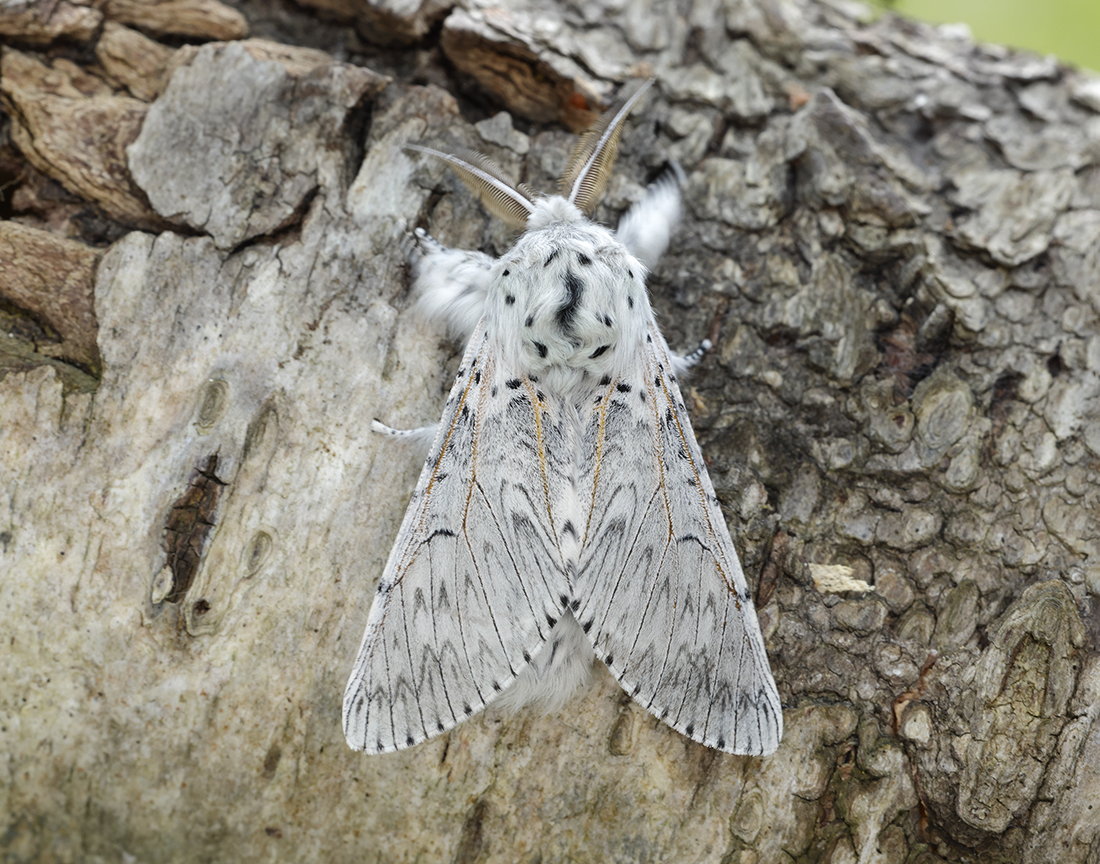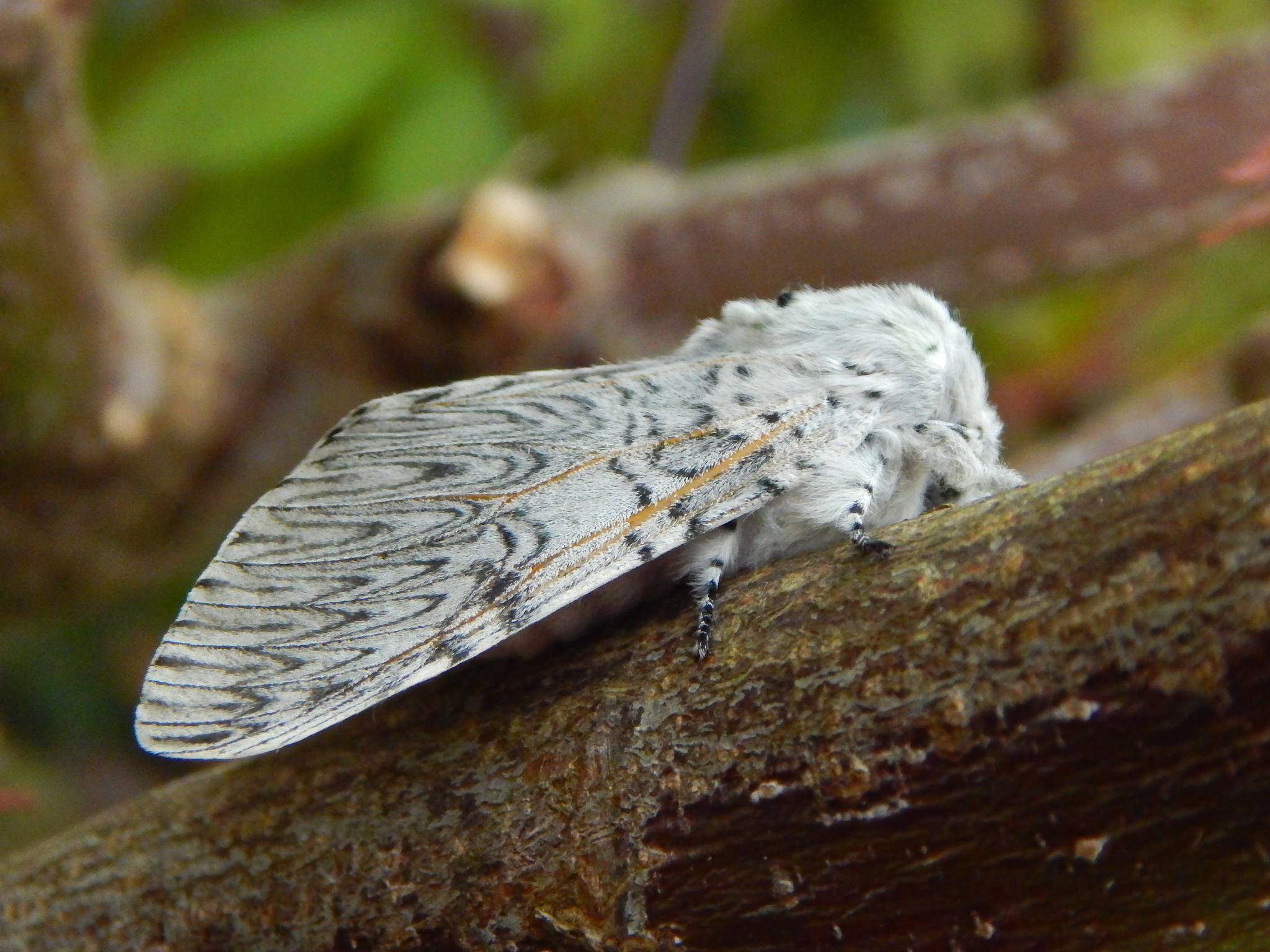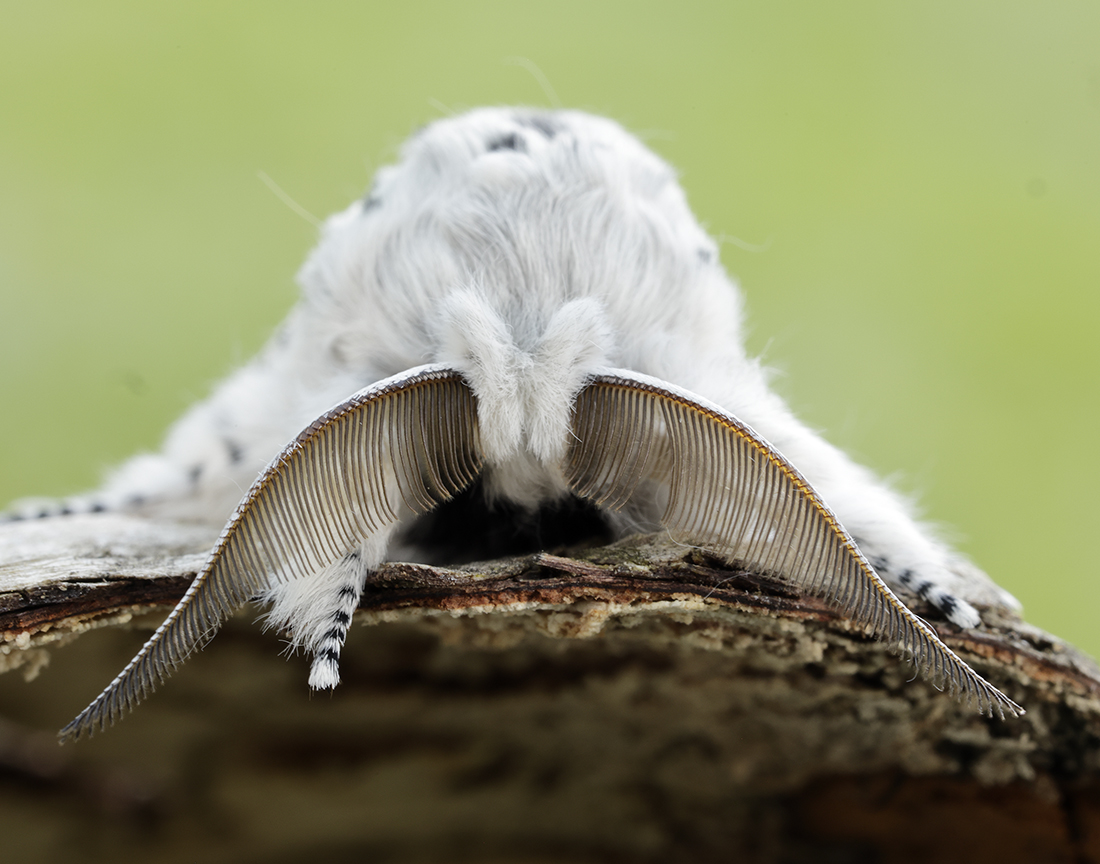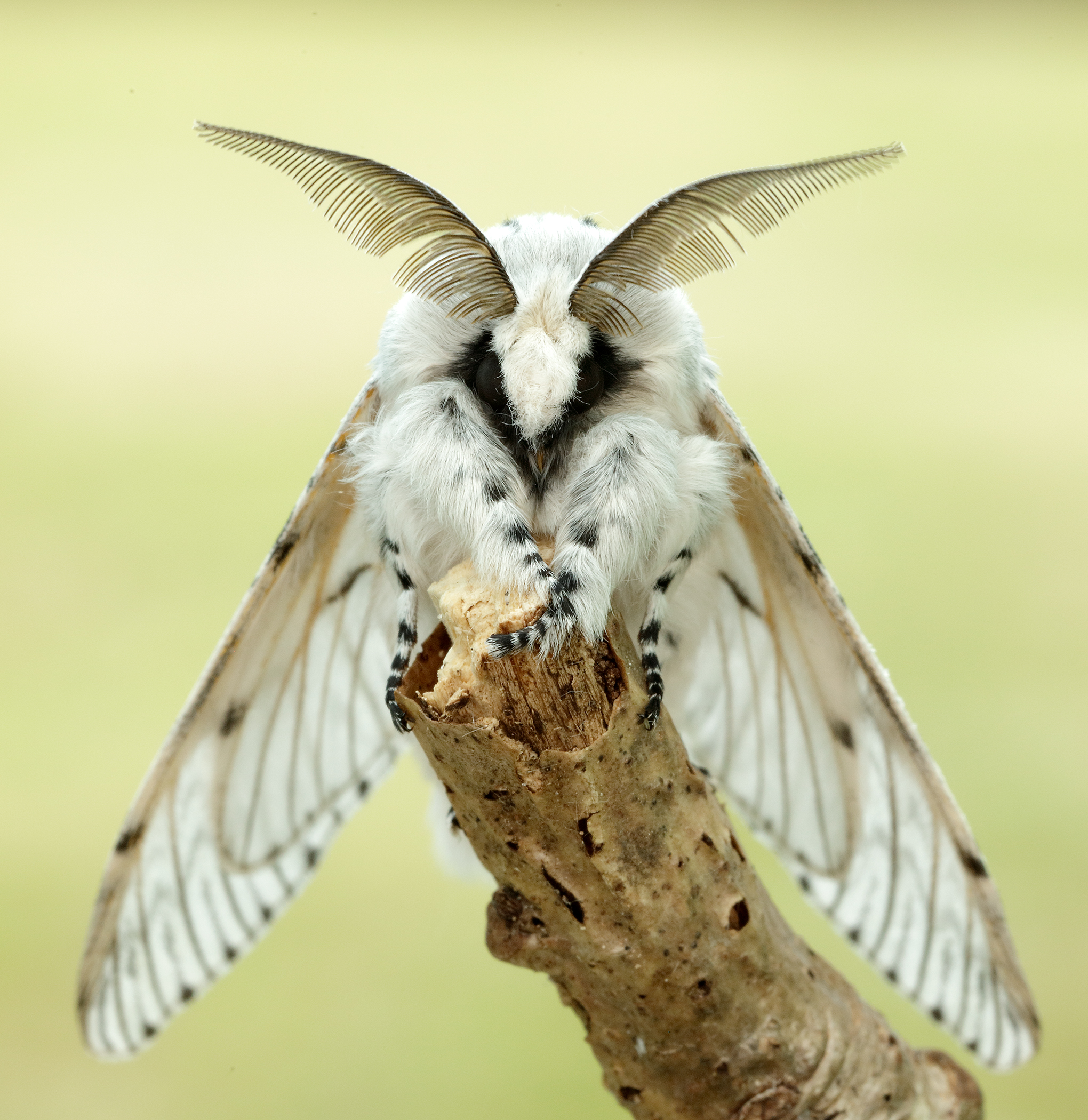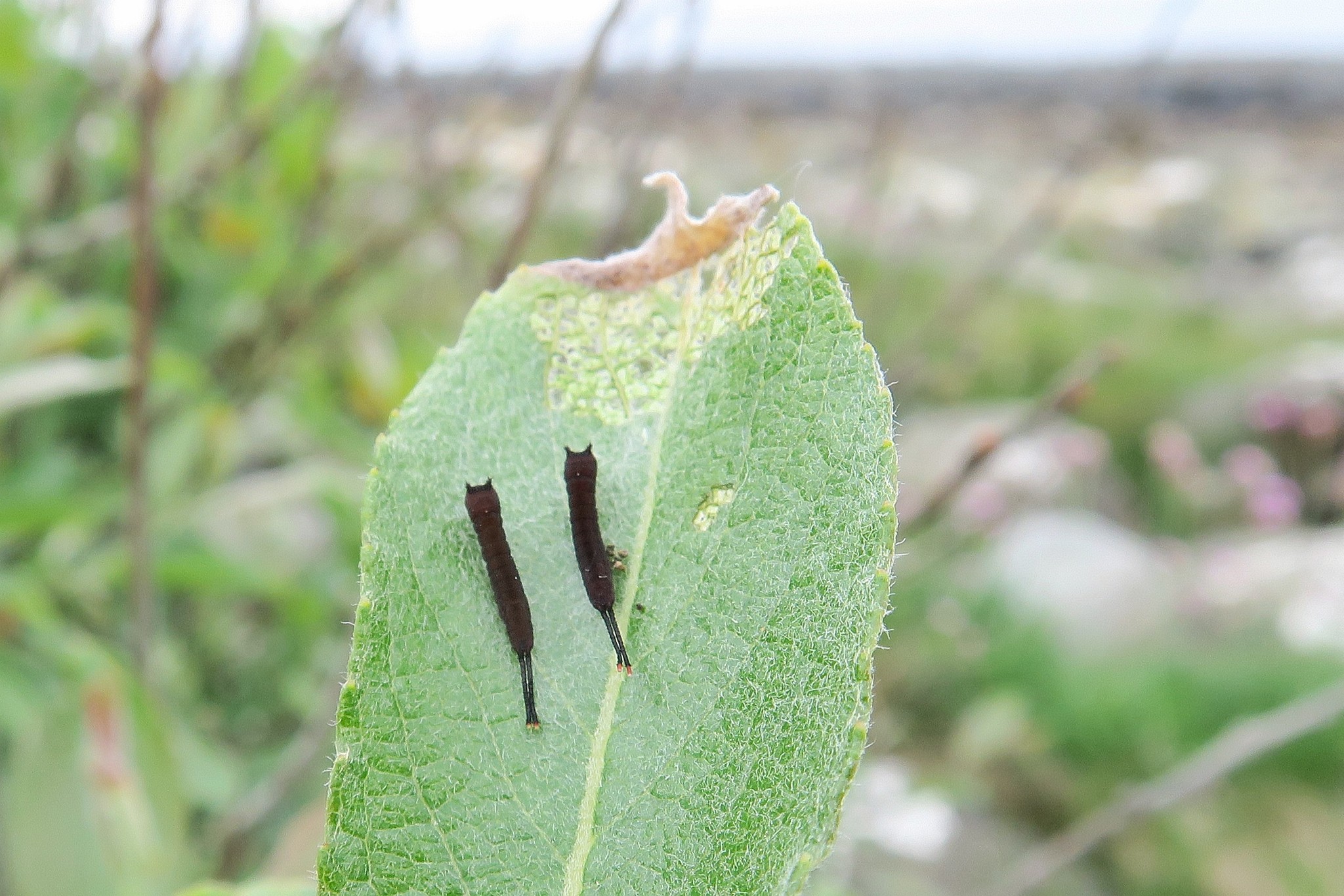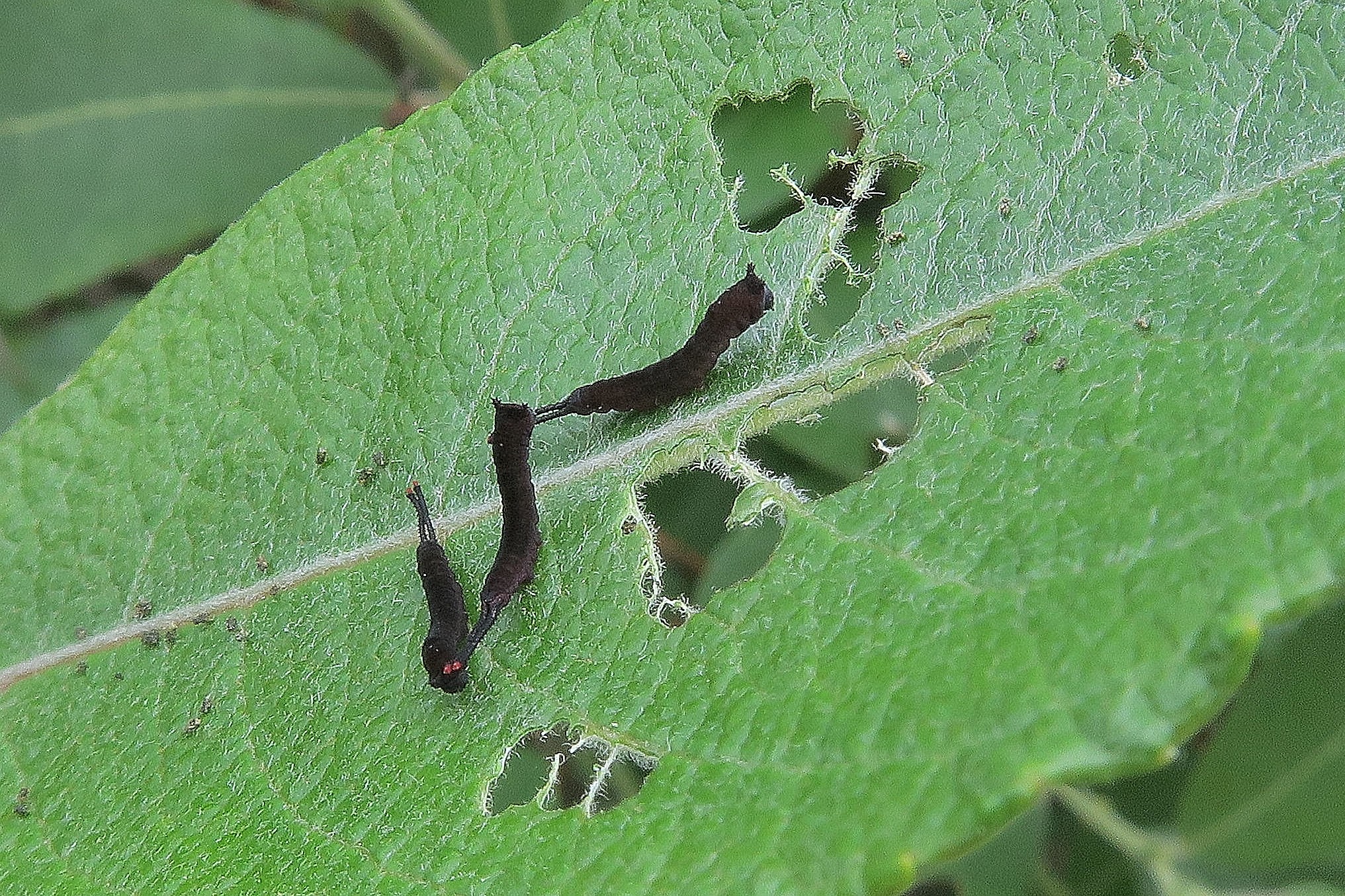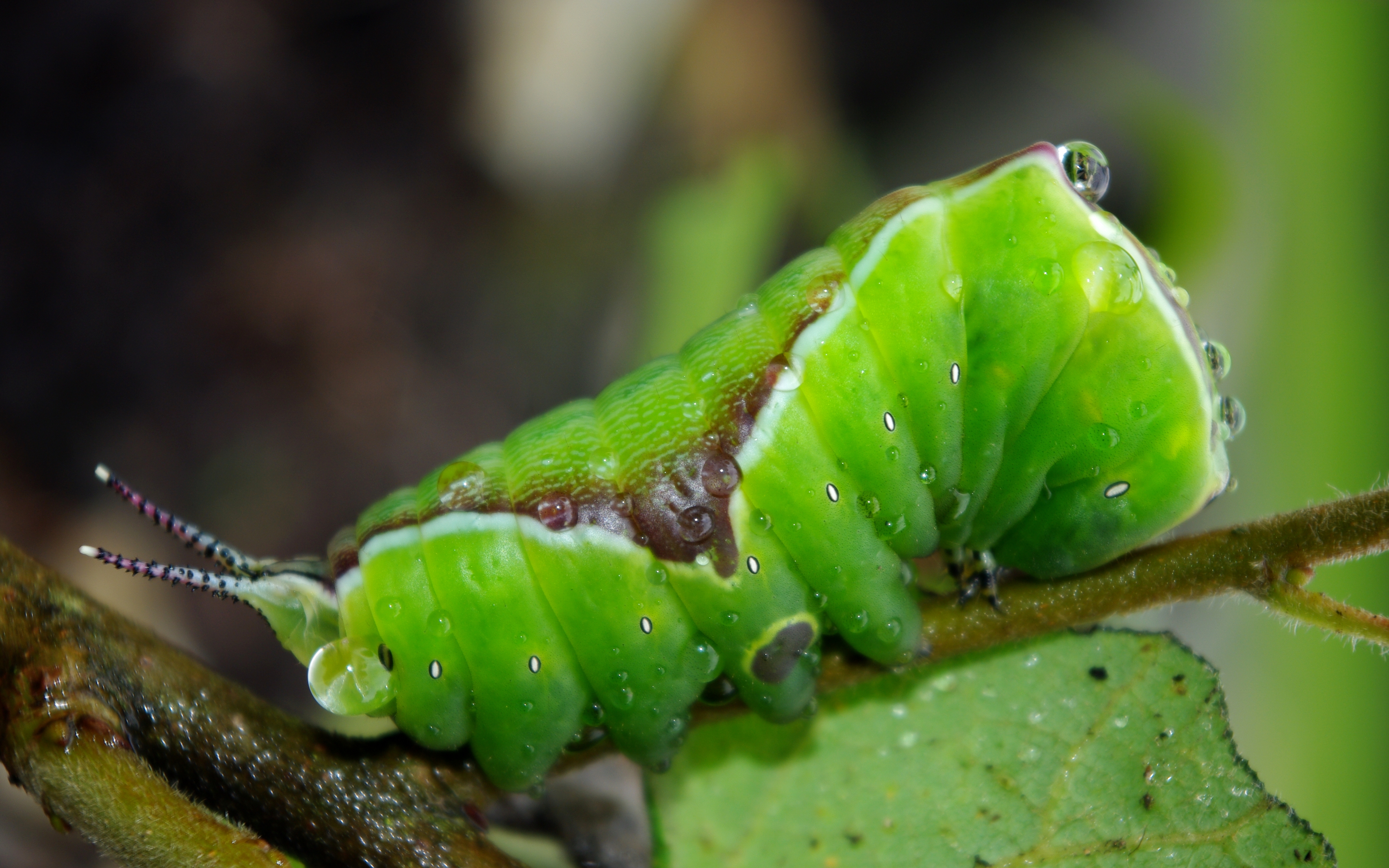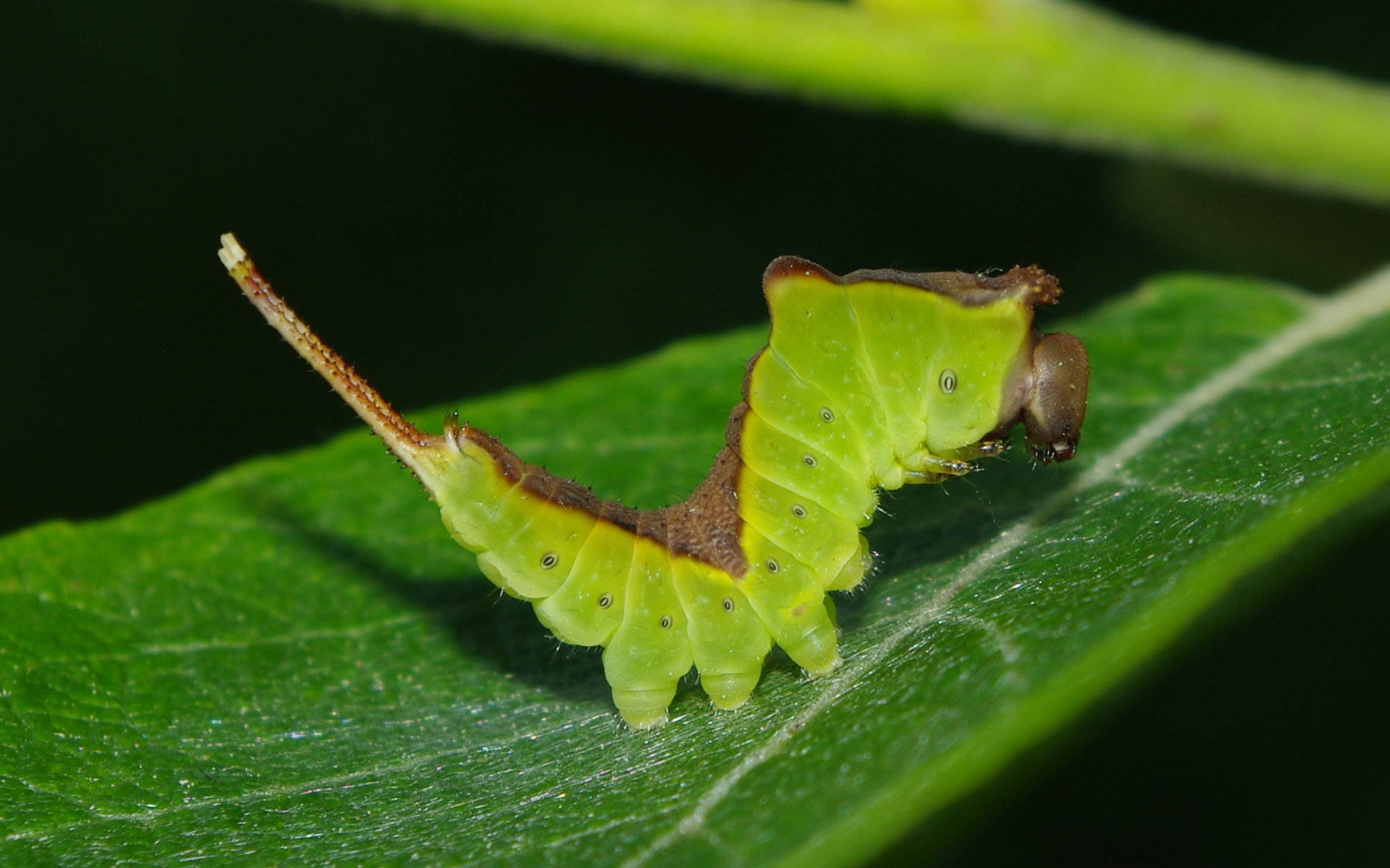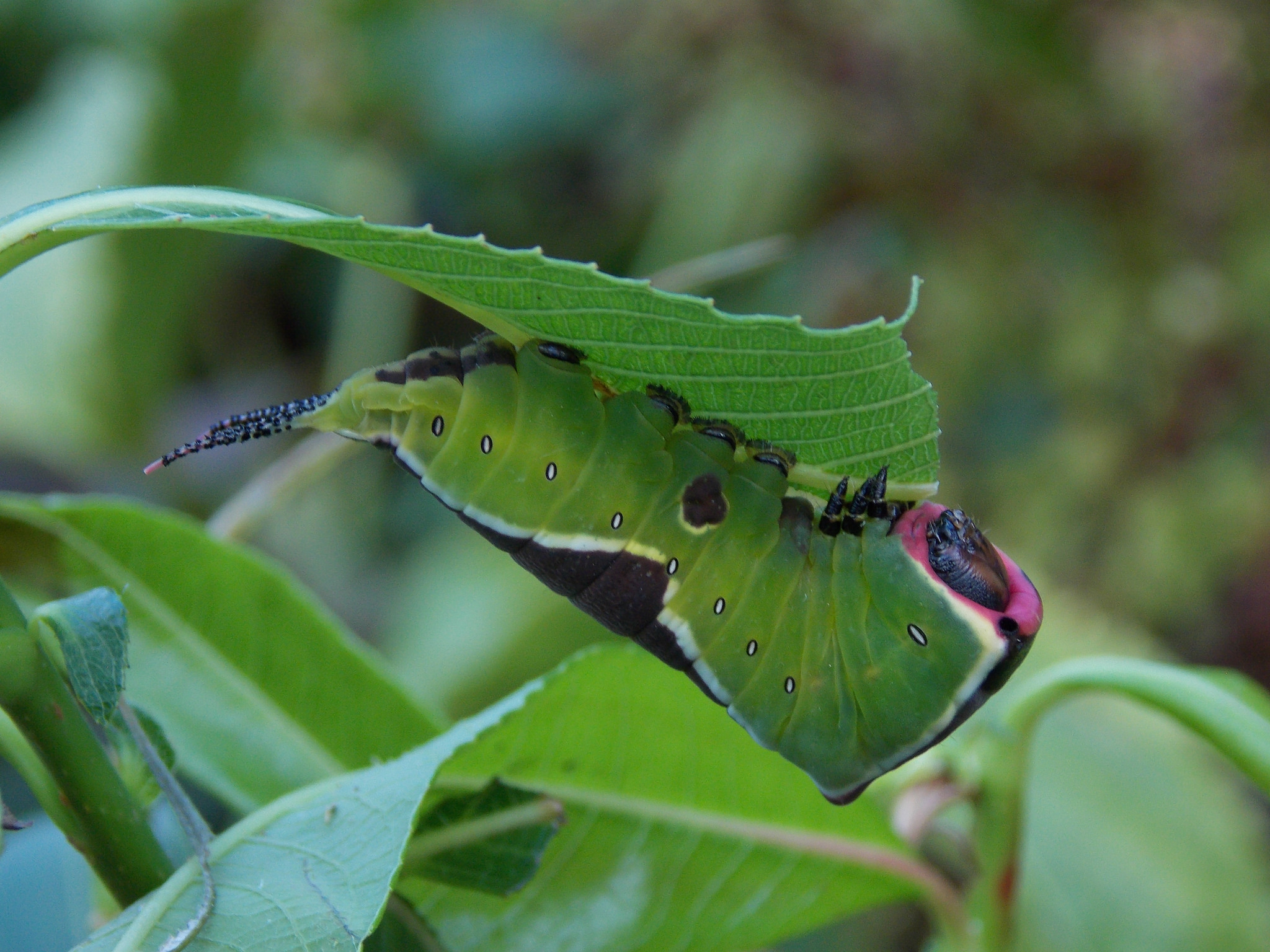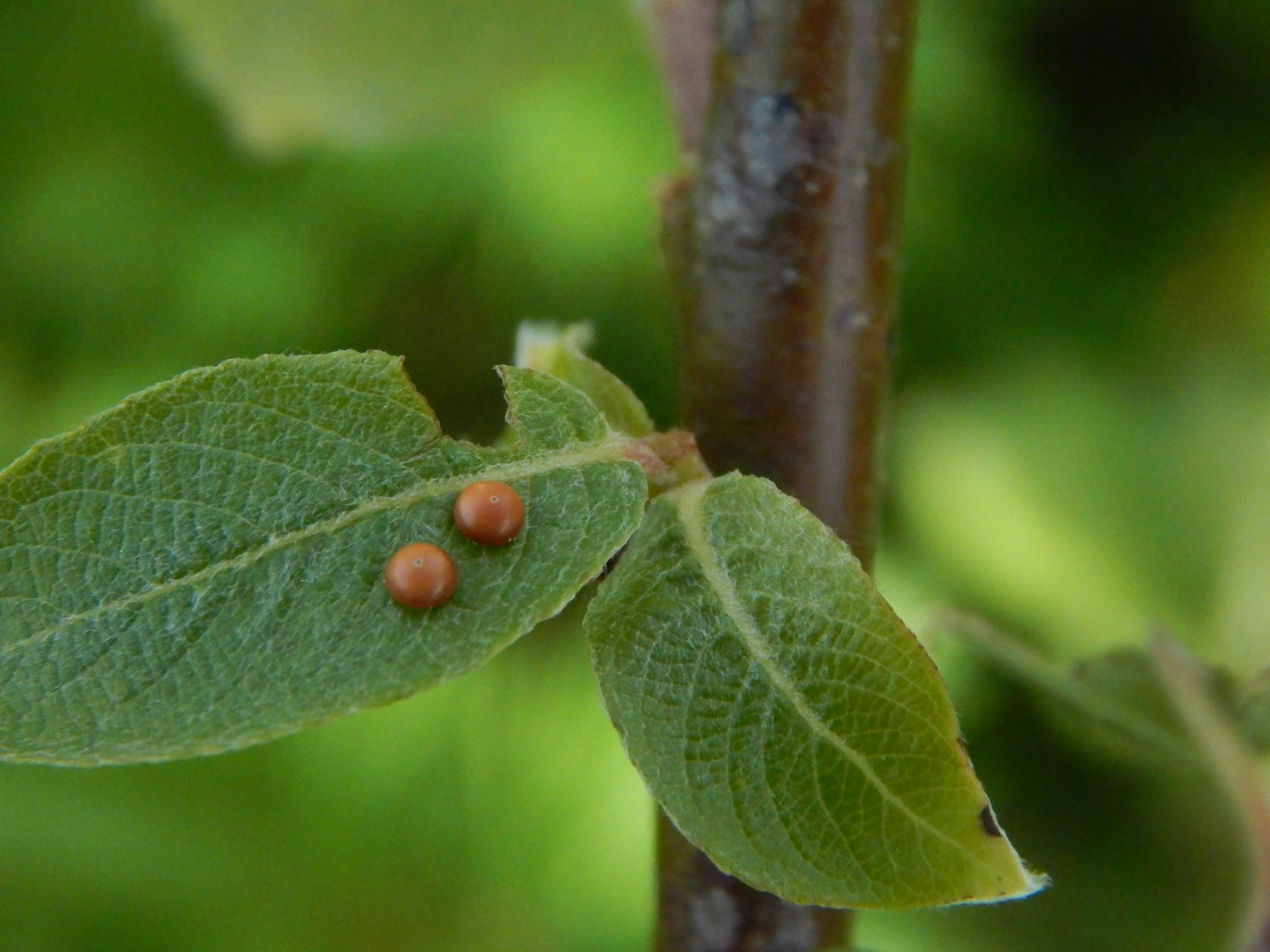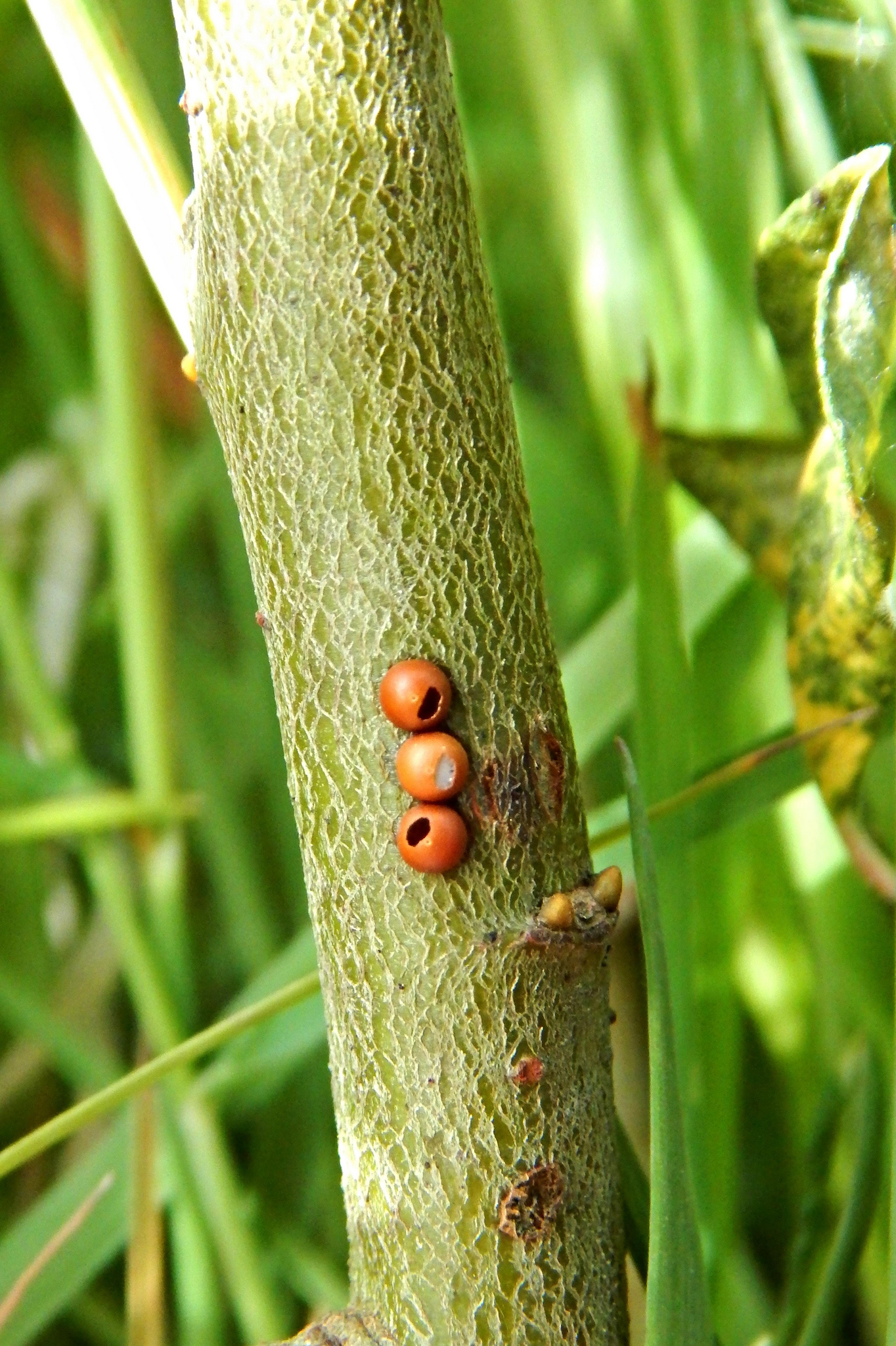Identification
Unmistakable. Females are larger and have a grey hindwing.
Recording Method
Comes to light.
Life cycle
One generation that is earlier then England, from mid-April to mid-June. Overwinters as a pupa. Larvae are present July to September.
Larval foodplants
Poplars and willows in sunny areas.
Habitat
Gardens, moorland, woodland and hedgerows.
History
Somerville (1859) while on a visit to the Moffat area had found one larva on sallow in August of that year. Sallow is not noted as a foodplant by Waring et al. Lennon (1863) had found it near Tinwald Downs (VC72) and Lochaber in Mabie Forest (VC73). Gordon (1913) had found that since many of the young poplar trees had died it had become much scarcer around the Corsemalzie area, with the imago rarely seen. However, he did manage to capture a female at rest on a rush stem at the Castle Loch, Mochrum (VC74) on the 28th May 1897.
William Evans in his insect migration research at Scottish lighthouses had a male and female sent to him by D. A. Mowat, the keeper at Killantringan, which had been captured on 30th April 1914. He also received a male the following year.
Sir Arthur Duncan (1909-84) had recorded it from Tynron, Closeburn and Castlehill, Dumfriesshire (all VC72) in his lifetime. David Cunningham (1952) trapped one in June/July 1951 on Tinwald Downs using an MV trap.
In the 1970s it was found on the Silver Flowe, Brigton, Auchenrivock, Lockerbie, Shawhead and Crocketford, with just one record in the 1980s of one trapped on the Hensol Estate. Three larvae were found in September, 1979, on willow in the Langholm area, in eastern Dumfriesshire.
From 1993 to 2010 there were thirty records with Kirkton (13 records) and Auchencairn (six records) providing most. Black Loch at Mochrum, Portpatrick and Forest Moor were the only sites in Wigtownshire where it was recorded.

